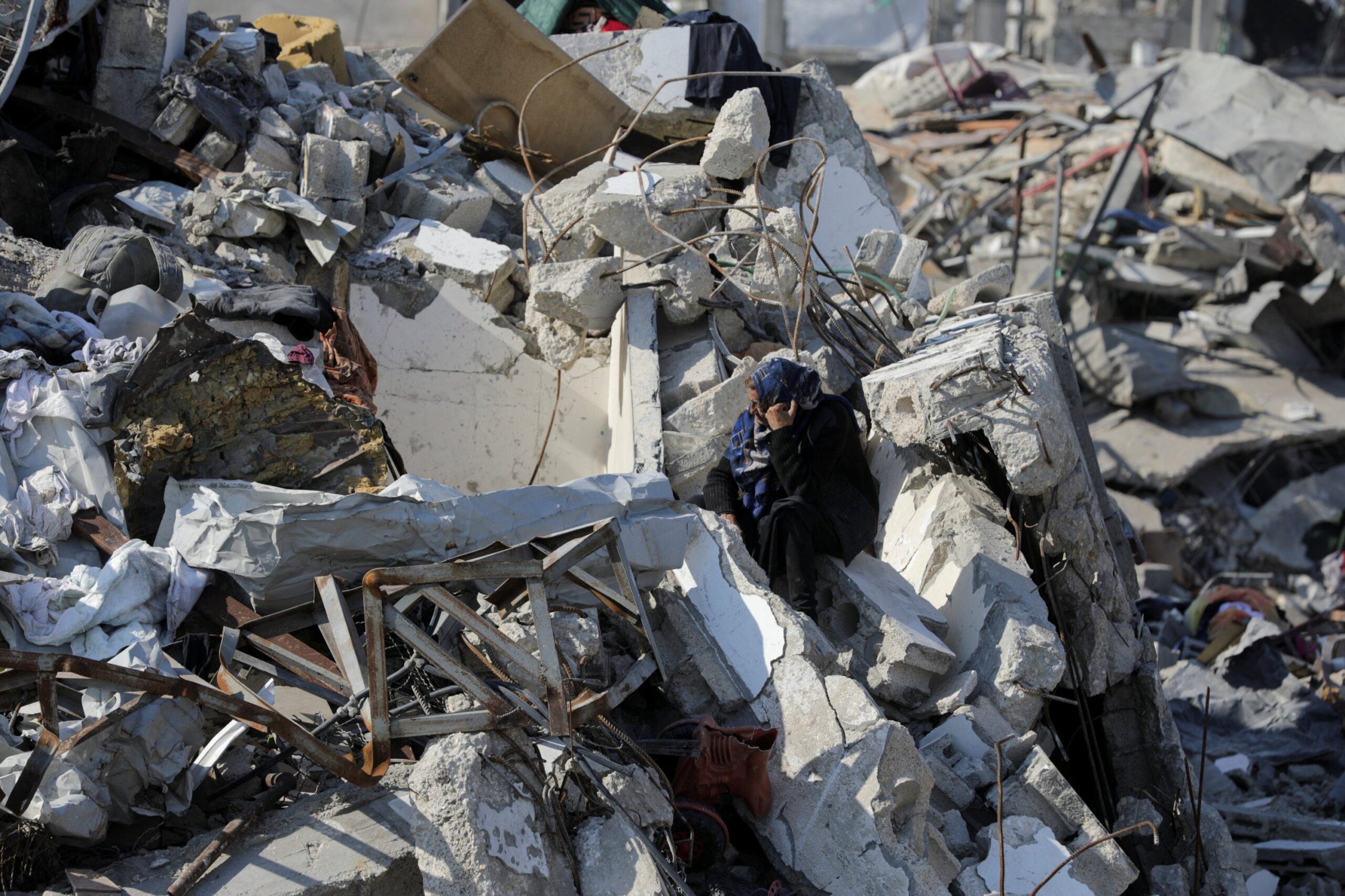Introduction
The Gaza Strip is one of the most densely populated and politically sensitive areas in the world. Located along the eastern Mediterranean coast, it has been a focal point of conflict, humanitarian crisis, and international diplomacy for decades. Despite its small size, Gaza’s geopolitical significance is immense due to its history, governance, and its role in the larger Israeli-Palestinian conflict.
To understand the complexities of Gaza, it is essential to explore its geography, history, political landscape, and the ongoing humanitarian crisis affecting its people.
Geography and Demographics
Gaza is a narrow coastal enclave covering approximately 365 square kilometers (141 square miles). It borders Israel to the north and east, Egypt to the south, and the Mediterranean Sea to the west. Despite its small size, it is home to over 2.3 million people, making it one of the most densely populated regions on Earth.
The majority of Gaza’s population consists of Palestinian Arabs, with a significant proportion being refugees or descendants of refugees displaced during the 1948 Arab-Israeli War. The vast majority of residents are Sunni Muslims, with a small Christian minority.
The high population density, combined with limited resources and an economic blockade, has led to severe humanitarian challenges, including unemployment, poverty, and restricted access to essential services.
Historical Background
Gaza Strip has a rich history dating back thousands of years. It has been ruled by various civilizations, including the Egyptians, Philistines, Romans, Byzantines, and Ottomans.
- Ancient Gaza: The city played a crucial role in trade routes connecting Africa, the Middle East, and Asia.
- Ottoman Period (1517-1917): Gaza was part of the Ottoman Empire for four centuries before being occupied by the British during World War I.
- British Mandate (1917-1948): The region saw increased tensions between Jewish and Arab populations, setting the stage for future conflicts.
Creation of the State of Israel and Its Impact on Gaza (1948)
The establishment of Israel in 1948 led to the first Arab-Israeli war, causing massive displacement of Palestinians. Many sought refuge in Gaza, increasing its population dramatically.
From 1948 to 1967, Gaza was administered by Egypt. However, Palestinian self-governance was limited, and the region remained impoverished. The Palestinian refugee crisis intensified, fueling resentment and nationalist movements.
The Six-Day War and Israeli Occupation (1967-2005)
In 1967, during the Six-Day War, Israel captured Gaza from Egypt and maintained control over the territory for nearly four decades.
- Israeli Settlements: During this time, Israeli settlements were established, further straining relations between Israelis and Palestinians.
- The First Intifada (1987-1993): A popular uprising against Israeli rule, marked by protests and violent clashes.
- The Oslo Accords (1993-1995): A peace initiative that led to the establishment of the Palestinian Authority (PA) but did not resolve the Gaza issue.
- The Second Intifada (2000-2005): A period of intensified conflict, leading to Israel’s decision to withdraw from Gaza.
The 2005 Israeli Withdrawal and Hamas Takeover
In 2005, Israel unilaterally withdrew its military forces and settlers from Gaza, hoping to reduce tensions. However, the power vacuum led to internal Palestinian conflicts.
- In 2006, Hamas won the Palestinian legislative elections, leading to a violent struggle with Fatah, the ruling party in the West Bank.
- By 2007, Hamas had taken full control of Gaza, resulting in international sanctions and a blockade imposed by Israel and Egypt.
This marked the beginning of a new era of political isolation, economic struggles, and periodic conflicts with Israel.
The Gaza Blockade and Humanitarian Crisis
Following Hamas’ takeover, Israel and Egypt imposed a blockade, restricting the movement of people and goods.
- Economic Devastation: Unemployment rates soared, reaching over 50%, with youth unemployment even higher.
- Healthcare Crisis: Hospitals lack basic medical supplies due to restrictions on imports.
- Clean Water Shortages: Over 97% of Gaza’s water is undrinkable due to pollution and infrastructure damage.
The blockade has led to a dire humanitarian situation, with most residents relying on international aid for survival.
Wars and Conflicts in Gaza
Gaza Strip has been at the center of multiple wars and conflicts, primarily between Hamas and Israel. The major conflicts include:
- 2008-2009 (Operation Cast Lead): A three-week war that resulted in over 1,400 Palestinian deaths and massive destruction of infrastructure.
- 2012 (Operation Pillar of Defense): An eight-day conflict triggered by the killing of a Hamas military leader, leading to airstrikes and rocket attacks.
- 2014 (Operation Protective Edge): One of the deadliest wars, lasting 50 days and killing over 2,000 Palestinians, many of whom were civilians.
- 2021 Conflict: Triggered by tensions in Jerusalem, this 11-day war led to hundreds of deaths and severe damage to Gaza’s already struggling infrastructure.
The recurring wars have left deep psychological scars on Gaza’s population, particularly children, who grow up amid fear, destruction, and uncertainty.
The Role of International Organizations
Several international organizations are actively involved in providing humanitarian aid and seeking solutions for the Gaza crisis:
- UNRWA (United Nations Relief and Works Agency): Provides education, healthcare, and food aid to Palestinian refugees.
- International NGOs: Groups like the Red Cross and Doctors Without Borders offer medical aid and emergency relief.
- United Nations and Diplomacy: The UN frequently calls for ceasefires, but resolutions often face political obstacles.
Despite these efforts, the blockade, ongoing conflicts, and political divisions make sustainable solutions difficult.
The Political Landscape of Gaza
Gaza Strip is politically controlled by Hamas, while the West Bank is governed by the Palestinian Authority (PA). This division has created tensions within Palestinian leadership and weakened efforts for a united front in negotiations with Israel.
External actors also play a role:
- Iran and Qatar support Hamas financially and politically.
- Egypt and Saudi Arabia have complicated relations with Hamas due to its ties to the Muslim Brotherhood.
- Israel and the U.S. view Hamas as a terrorist organization and refuse direct negotiations.
This political complexity makes peace efforts more challenging.
Daily Life in Gaza Strip
Living conditions in Gaza are extremely difficult due to:
- High Unemployment: Over 50% unemployment, with even higher rates among youth.
- Electricity Shortages: Power is often available for only 4-6 hours per day.
- Food Insecurity: Many families depend on humanitarian aid for survival.
- Limited Freedom of Movement: Strict border controls prevent people from leaving freely.
Despite these hardships, Gazans show resilience through entrepreneurship, art, and social activism.
The Role of Media in Shaping Perceptions of Gaza Strip
Media plays a significant role in shaping international opinions about Gaza.
- Western Media: Often focuses on Hamas’ role in the conflict while downplaying the humanitarian crisis.
- Arab Media: Highlights Palestinian suffering but may downplay Hamas’ political failures.
- Social Media: Provides firsthand accounts from residents, exposing realities often overlooked by traditional media.
The information war is almost as intense as the physical conflict, with both sides trying to control the narrative.
Possible Future Scenarios for Gaza Strip
Several outcomes are possible for Gaza’s future:
- Two-State Solution: A negotiated peace leading to an independent Palestinian state alongside Israel.
- Continued Conflict: Ongoing wars and blockades with no clear resolution.
- International Mediation: Greater involvement from global powers to broker a long-term ceasefire and economic recovery plan.
The future depends on political leadership, international pressure, and the will of both Israelis and Palestinians to seek peace.
Conclusion
The Gaza Strip is a symbol of both resilience and suffering. Decades of conflict, political struggles, and humanitarian crises have shaped its history. While international organizations provide aid, long-term solutions remain elusive due to political divisions and ongoing conflicts.
A sustainable peace in Gaza requires diplomatic efforts, humanitarian support, and the recognition of Palestinian rights while addressing Israel’s security concerns. Until then, the people of Gaza continue to endure hardship, hoping for a better future.
FAQs
1. Why is Gaza so densely populated?
Gaza’s high population density is due to the influx of Palestinian refugees who were displaced during the 1948 Arab-Israeli War. With limited space and high birth rates, the population has grown significantly over the years.
2. What is the main reason for the conflict in Gaza?
The conflict in Gaza stems from territorial disputes, political struggles, and historical grievances between Israelis and Palestinians. The blockade, Hamas’ governance, and Israeli military actions contribute to ongoing tensions.
3. How does the blockade affect daily life?
The blockade restricts the movement of goods and people, leading to high unemployment, food and water shortages, power outages, and a struggling healthcare system.
4. What role does the UN play in Gaza?
The UN provides humanitarian aid, supports refugee programs, and mediates ceasefire negotiations. However, political disagreements among UN member states often hinder its effectiveness in resolving the conflict.
5. Is there any hope for peace in Gaza?
While peace remains elusive, ongoing diplomatic efforts, international pressure, and grassroots peace initiatives offer some hope. A long-term solution requires political compromises from both Israelis and Palestinians.









